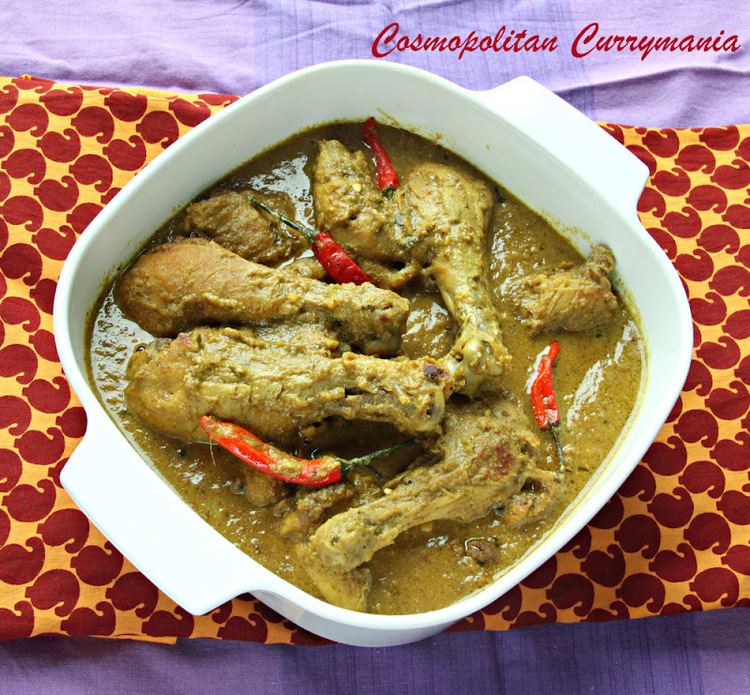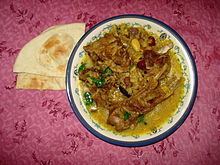 | ||
Similar Hyderabadi cuisine, Biryani, Hyderabadi biryani, Gosht, Butter chicken | ||
Dum pukht (Persian: دمپخت) or slow oven cooking is a cooking technique associated with the Awadh region of India, in which meat and vegetables are cooked over a very low flame, generally in sealed containers. The technique may be based on earlier Persian cooking methods introduced to India, but tradition assigns its origin in India to the reign of Nawab Asaf-ud-Daulah (1748–97). Historically Awadhi, it is now also commonly used in other cuisines like Mughlai, Punjabi and Hyderabadi.
Contents

Method

Dum means to 'breathe in' and pukht to 'cook'. Dum pukht cooking uses a round, heavy-bottomed pot, a handi, in which food is tightly sealed and cooked over a slow fire. There are two main aspects to this style of cooking; bhunao and dum, or 'roasting' and 'maturing' of a prepared dish. In this style of cuisine, herbs and spices play an important role. The process of slow roasting gently persuades each to release maximum flavor. The sealing of the lid of the handi with dough achieves maturing. Cooking slowly in its juices, the food retains all its natural aromas and becomes imbued with the richness of flavors that distinguishes the dish.

In some cases, cooking dough is spread over the container, like a lid, to seal the foods. This is known as purdah (veil), but on cooking becomes a bread which has absorbed the flavours of the food and the two are best eaten together. In the end, dum pukht food is about aroma, when the seal is broken on the table and the fragrance of an Avadhi repast floats in the air.
Less spices are used than in traditional Indian cooking, with fresh spices and herbs for flavouring.
Legendary origin

Legends claims that when Nawab Asaf-ud-daulah (1748–1797) found his kingdom in the grip of famine, he initiated a food-for-work programme, employing thousands in the construction of the Bada Imambara shrine. Large cauldrons were filled with rice, meat, vegetables and spices and sealed to make a simple, one-dish meal that was available to workers day and night. Then, one day, the Nawab caught a whiff of the aromas emanating from the cauldron and the royal kitchen was ordered to serve the dish.

Other sources, however, simply state that dum pukht appears to be based on a traditional Indian method of cooking dishes buried in sand.

